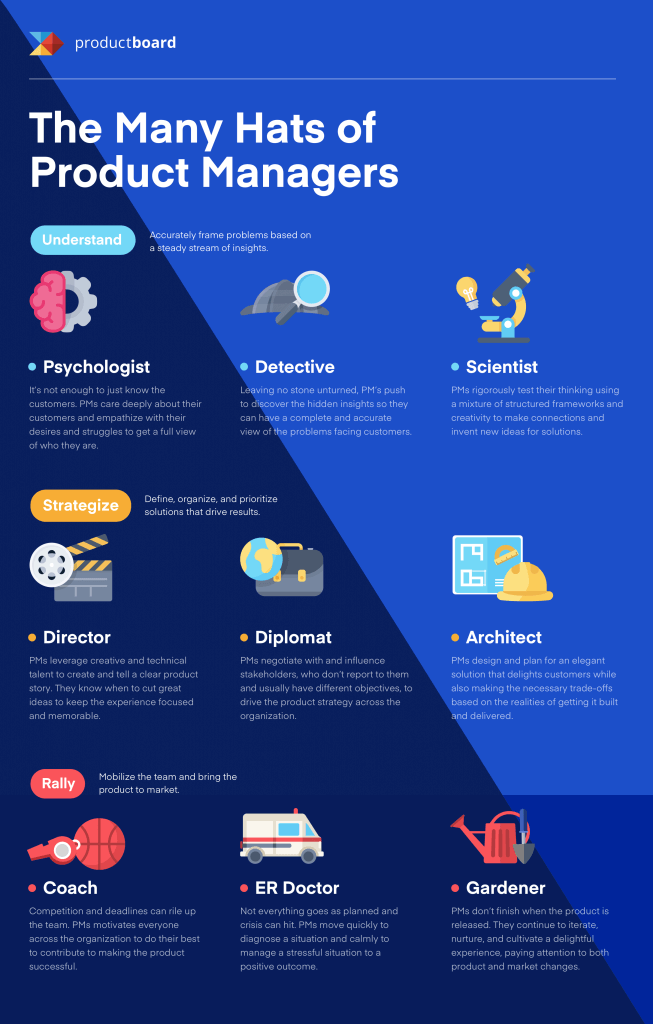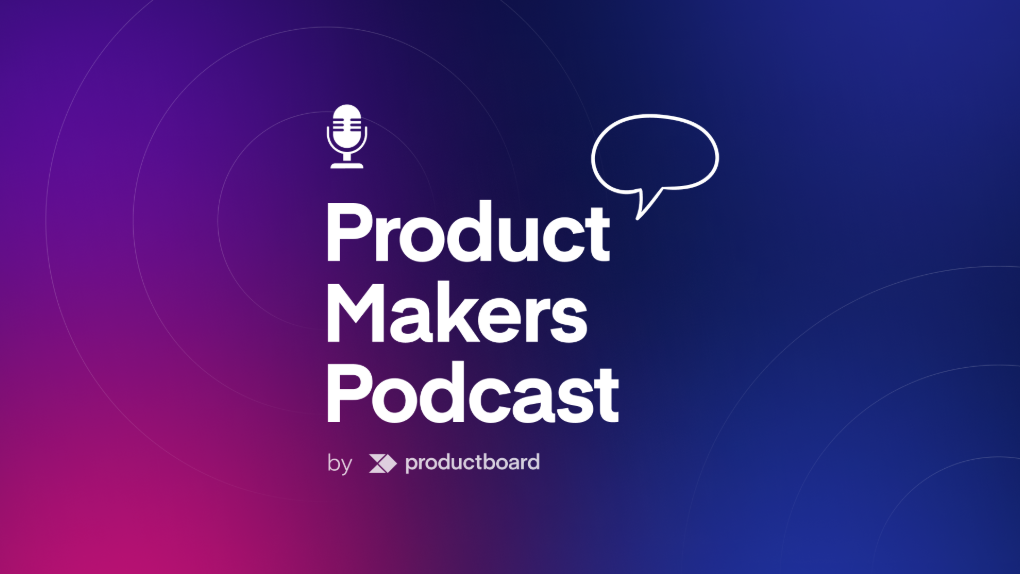The ultimate guide to mapping your product management career path

How do you start a career in product management? And what exactly is a typical product manager career path? We’ll be exploring these questions throughout this post.
Why pursue a career in product management?
To begin, let’s consider a simple question: Why would you want to start a career as a product manager?
There are several reasons why a career in product management can be appealing to a wide variety of folks:
Product management requires a broad skill-set
If you want to excel as a product manager, you need to be both technical and creative, to balance working as an individual and as part of a team, and to think both tactically and strategically. If you’re someone who values having a broad skill set rather than specializing in just one area, you might be drawn to a career in product management.
There’s no “typical day” for product managers
Because product managers have such a broad range of responsibilities, their day-to-day schedule can involve tasks as varied as interviewing customers, designing prototypes, meeting with leaders from customer success and sales, and sending updates to executives (to name just a few!). If you worry about getting bored doing the same tasks day in and day out, you can feel confident that this is rarely the case for product managers.
It’s a high-growth and lucrative career
The increasingly digital nature of our lives means that there’s more and more demand for product managers. It’s a growing field that’s showing no signs of slowing down. And if money motivates you, a career as a product manager is often well compensated. According to Glassdoor, the median base salary for a product manager in the US is $113,000.
Product manager role and responsibilities
So what exactly does a product manager do? As we noted above, there are many ways to answer that question. In the simplest possible terms, product managers decide what features to build next. To achieve this, they are generally responsible for:
- Discovering what users need through activities like interviewing customers, conducting user research, and reviewing feedback
- Prioritizing what to build by following industry trends, conducting competitive analysis, and working with leadership to align on product objectives
- Rallying everyone around the roadmap by holding meetings with different stakeholders like sales, customer success teams, and customer advisory boards.
- Delivering the feature by collaborating with engineers, designers, and product marketing managers.
- Championing the team so they feel supported and empowered to do their best work and morale remains strong.
To explore any of these activities in more detail, be sure to check out What does a product manager do? Everything you need to know.

The skills that make product managers successful
Now that you have a better idea of what product managers do every day, you might be wondering what skills you should prioritize building to have a successful product management career. Here are a few.
Learning to interview your customers
Discovery through customer interviews is a huge part of the product manager’s responsibility. The best product managers learn to go beyond the surface of a customer’s request and get to the bottom of what they really need.
Experimenting with prototypes
You will need to be comfortable designing and experimenting with prototypes to figure out the best way of aligning specific features with customer behavior.
Defining your product objectives
What is your product going to achieve for your customers and your company? Defining these objectives requires collaborating with company leadership and department heads to agree on what the company’s goals and priorities are for the next quarter or year. Your objectives for the product should align with and support these goals.
Communicating effectively and influencing others
Being a product manager requires “influencing without authority”. You will often need to get buy-in and support from people outside your own team, like sales, customer success, marketing, and even executives. Honing your communication and storytelling skills will serve you well in your product management career.
Cultivating your curiosity
The first answer or solution you come across will rarely be the right one. And the more you develop expertise in your area, the easier it will be to jump to quick conclusions. But skillful product managers cultivate their curiosity, question their own assumptions, and strive to learn as much as possible from their customers and colleagues.
The product manager career path
There’s no single path to a career in product management. People come from all sorts of educational and professional backgrounds to this field. And while the specifics can vary from company to company, the general career progression tends to follow this pattern:
Assistant/associate product manager → Product manager → Senior product manager → Group product manager → Director of product → VP of product → Chief Product Officer
Assistant/Associate product manager
This is the entry-level product position for someone who is new to the role and has no prior product experience. The assistant or associate product manager role involves developing empathy for customers, collaborating with others, and synthesizing information from various sources.
To make the transition from assistant or associate product manager to product manager, you’ll need to demonstrate mastery of core product management skills and the ability to work independently or with minimal direction.
Product manager
Because this is the most common title within the product manager career path, there can be a lot of variation in the expected skills and day-to-day responsibilities of someone who has this role. But generally speaking, a product manager leads at least one product development team and is responsible for at least one product or customer journey. As we mentioned earlier, a successful product manager has both technical skills (understanding what can be built and creating and testing prototypes) as well as interpersonal skills (communicating across teams and motivating people towards a common goal).
To move on to the next step in the product manager career path, generally a senior product manager title, a product manager will need to demonstrate that they’re not simply focused on the short-term or reacting to problems that arise. In order to take on the senior product manager role, they will need to show strategic thinking and the ability to connect their team’s work to the company’s business goals.
Senior product manager
Senior product managers have the ability to think in both the mid- and long-term future. They are able to connect what their team is doing today to what their company is hoping to achieve in the next few quarters or years. Their worldview also expands beyond their immediate company and they are expected to understand what’s happening in their market and industry at large. Senior product managers may be expected to take on more of a people manager role by mentoring more junior members of their team.
Once a senior product manager is ready to move on to the next role, their options can vary depending on the structure of their company. At some companies, there may be an option to move into a “group product manager” role, while at others the next step in the career ladder is a director of product. In either case, a senior product manager will need to prove that they are adept at coaching and leading other product team members and that they can skillfully handle communicating with executives and acting as the point person for the product organization.
Group product manager
Not every company has a group product manager role, but thought leaders within the product world like Ken Norton advocate that it should become more common. Ken writes, “It’s conceived as the perfect balance of people management and product leadership… GPMs are expected to manage other PMs, but not a large number, and no more than would allow you to continue allocating the majority of your energy to product work.”
Ken suggests that this role should be about 40% people management, 20% individual contributor work, and 40% product leadership.
Director of product
Similar in seniority to the group product manager role, a director of product generally replaces most of the time they used to spend on individual contributor work with managing others and ensuring that processes run smoothly. Ken Norton estimates that a director of product spends about 70% of their time on people management and about 30% on product leadership. At the director level, people tend to take on more direct reports, and they aren’t just managing individual contributors—they’re managing other managers. They will need to be comfortable with various aspects of running a team, including recruiting, hiring, and onboarding new people and offering professional development opportunities to their existing team members.
To move from a director of product to a VP of product role, a person will need to demonstrate their competence as a people manager. Do they organize their teams to maximize people’s strengths while also providing opportunities for people to learn and grow? Do they look for ways to streamline processes? Can they motivate their teams around a common goal that’s connected to the business’s success?
VP of product/Head of product
The VP of product or head of product role is another senior management role that’s more common in larger organizations that have several products or management layers. In startups, these titles are used to indicate the most senior product person at the company. The main focus of this role is managing other product managers and the team’s budget. A VP of product is also likely to be in charge of hiring and developing their team. At some organizations, there is the expectation that someone at this level will establish themselves as a thought leader by writing and speaking publicly about their product management philosophy.
To demonstrate success as a VP or head of product and move into the next step in the product manager career path, someone will need to demonstrate that they excel as a people leader, their communication skills are top-notch, and they can focus their own attention on the long-term future while ensuring their teams have everything they need to run smoothly on a day-to-day basis.
Chief Product Officer
The Chief Product Officer (CPO) is the most senior product person at a company. They generally oversee several product teams and are responsible for the overall product strategy and vision. They’re looking even further out into the future to set goals for the product team to accomplish over the next several years. As a member of the executive team, they will have to align with other executives and regularly communicate with the company’s board of directors.
Planning out your own product manager career path
As we’ve mentioned, there’s no single way to chart a product manager career path. People arrive and progress through product management from many different disciplines. And that’s one of the reasons why it’s such an appealing career to begin with!
As a general rule, your goal is to gradually move away from executing (individual contributor work or the “how”) and towards strategy and vision (the “what” and “why”). Lenny Rachitsky sums up this progression well in this Twitter thread. Lenny writes, “You can also think of it in terms of broadening your influence.” You start by focusing on your team’s vision and strategy and progress toward influencing your company’s vision and strategy.
While the skills you will need will vary depending on your company and role, Rich Mironov suggests that most product leaders will benefit from focusing on the following areas:
- Building/nurturing a product team
- Creating a strategy and tooling process so that product managers can succeed
- Growing cross-functional collaboration, trust, and camaraderie
- Working with C-level execs on business/product/goal alignment
Finally, keep in mind that careers these days are rarely linear. You might progress through a few rungs of the product manager career ladder or you might end up making some lateral moves. As Ken Norton describes, many product people discover that they prefer certain aspects of the job (like focusing on product development rather than people management). If this happens to you, you might seek out organizations that allow you to dedicate most of your time to the type of product work you’re most passionate about, even if this means that your title doesn’t change that much or you’re no longer moving up that traditional career ladder.
If you find that you enjoy senior leadership, you might end up in a different leadership role where “product” is no longer part of your title, like General Manager (GM), Chief Operating Officer (COO), or even Chief Executive Officer (CEO). Or you might put your expertise to use by starting your own business coaching other PMs and teams. There’s no one way to approach your product career!





